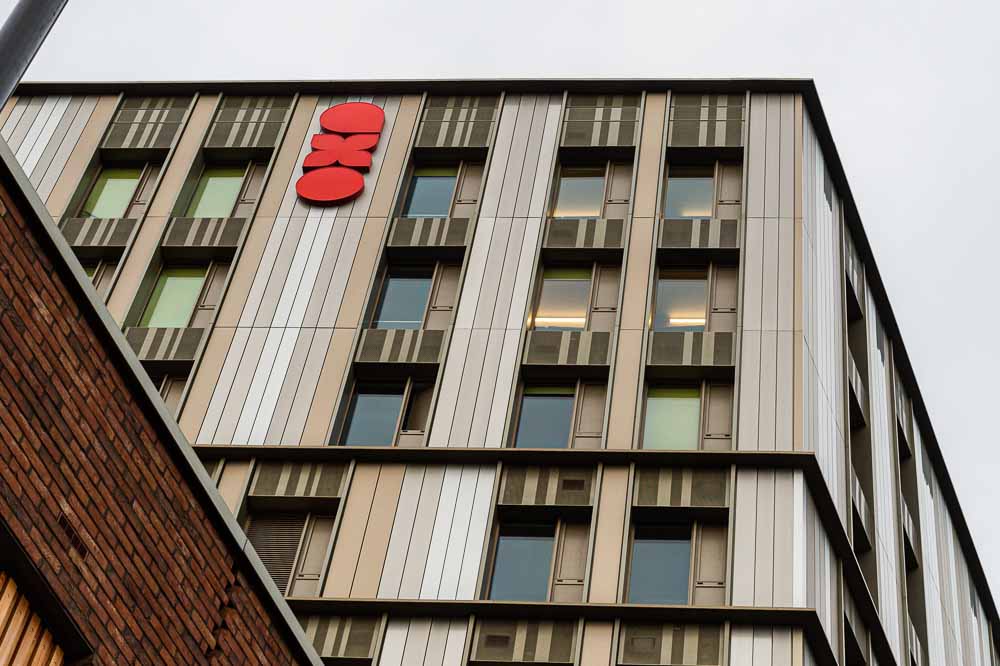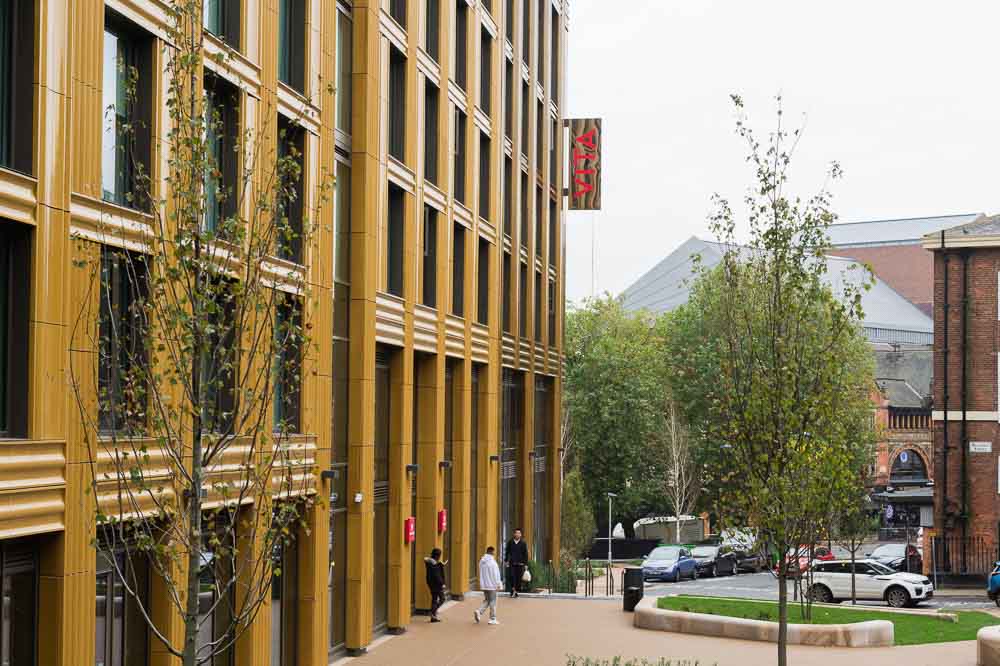Sign placement can be a very creative exercise, making use of walls, glass, doors, floor space and exterior spaces. Signage is increasingly appearing in a variety of locations, but in many cases vertical space is not utilised fully. Architects and interior designers miss the opportunity to use height to create a dramatic impression.
The ceiling space is rarely contemplated when interior designers and architects are considering where to place their signage, but it represents a huge and viable space. Additionally, modern building architecture often utilises open plan principles, particularly in entrance ways and communal areas. The ceiling isn’t the first consideration when specifying wayfinding signs as they can be non-specific in their direction, particularly if you are using large icons such as directional arrows, or using them to highlight areas that can be seen from a distance. If you are considering ceiling suspended signs for wayfinding, they should relay clear and simple instructions with large, high contrast graphics, as people tend to look for signs on walls rather than looking up.
Making use of vertical space provides an opportunity to display slogans and branding that is intended to brighten up an area or hide less attractive viewpoints. Beyond aesthetic reasons, large-space areas, such as warehouse ceiling space, may be as much as two stories off the ground and an otherwise dull view. Where large amounts of unobstructed ceiling space is available, suspended signs can be used to direct customers to specific types of products, and can frequently be seen in builders’ merchants where floor space may be a jumble of upright racking to hold stock.
Suspended signs can be fitted in a number of ways, depending upon the type of sign and its mass. Light sign materials can be attached to the ceiling using metal wire between a roof support and eyelets sewn into the sheeting, while more substantial signs may need stronger fixings. In office environments, suspended signs are normally attached via hidden fixings, behind false ceiling panels and held in place using tee-bars or other specialist fixings.
Suspended sign types in offices and shops also present the opportunity to consider using electronic sign systems and digital display technology. With these signage types, power and data supplied to the message box can be connected through a hollow member – including one of the suspension struts, making the overall effect one of clean and uncluttered lines.
Vertical spaces can make use of signage in many types of premises, and the options available are increasing in availability as techniques are developed. Vertical sign manifestation removes clutter from walls and floor space, and offer an elegant option in almost any situation, provided that headroom is not a problem.



